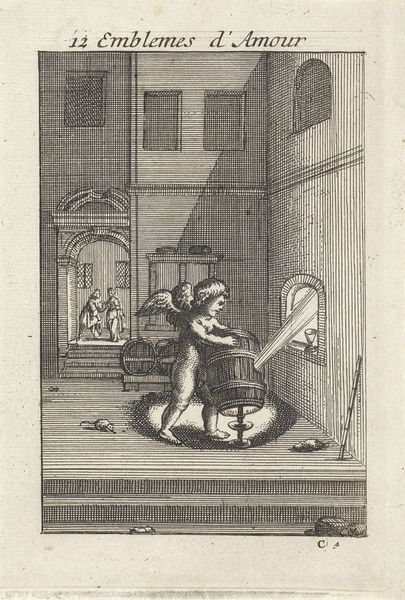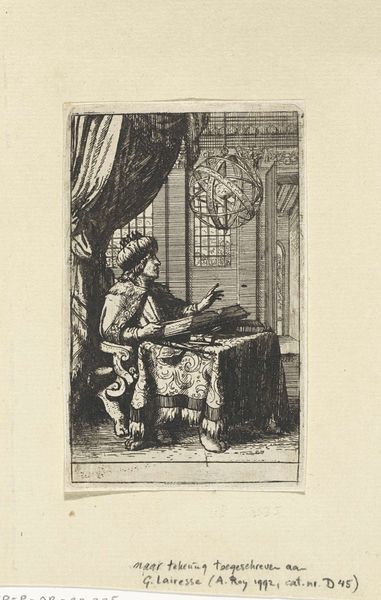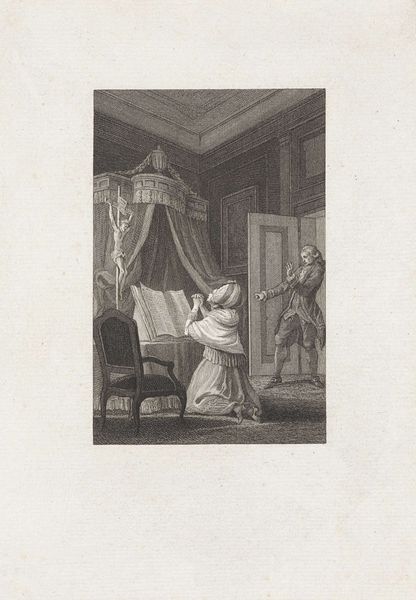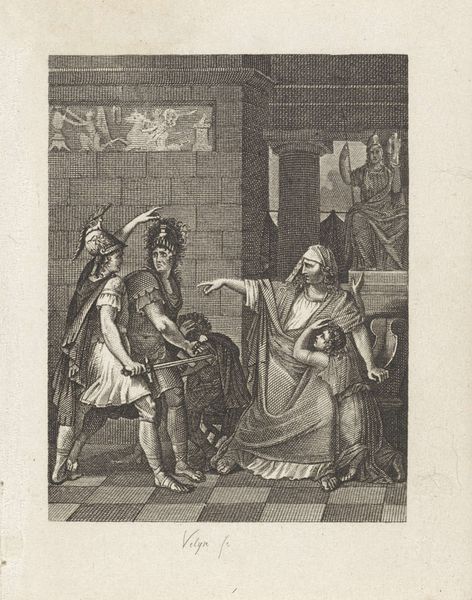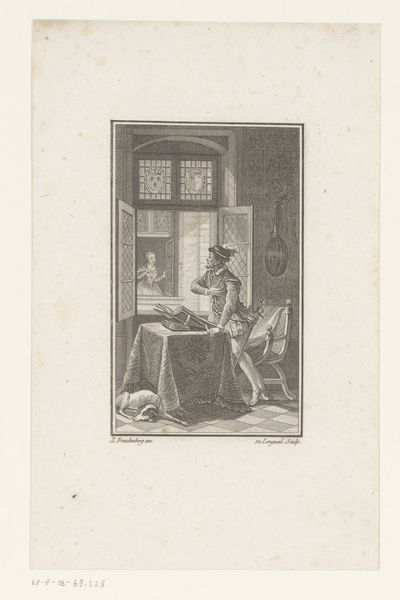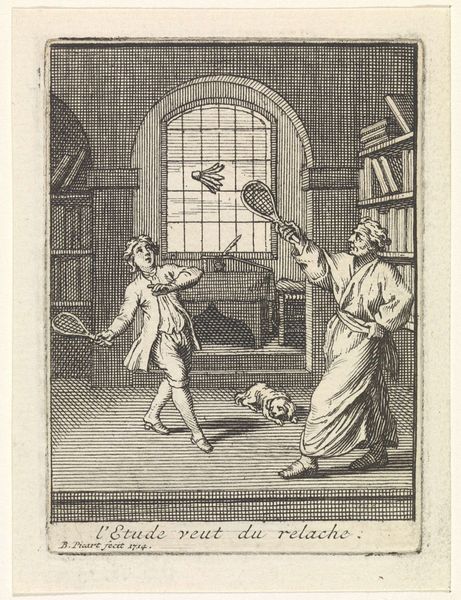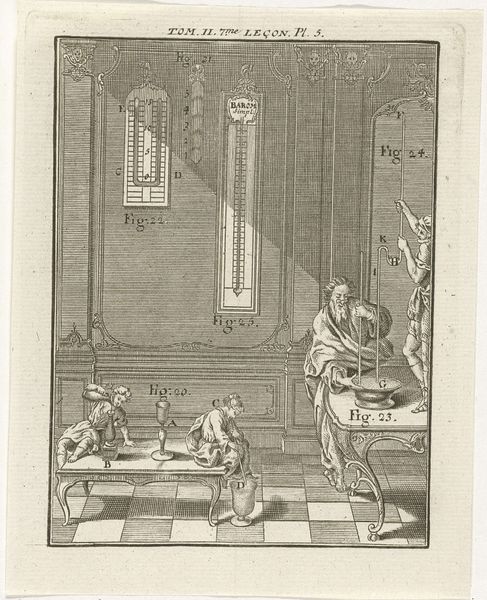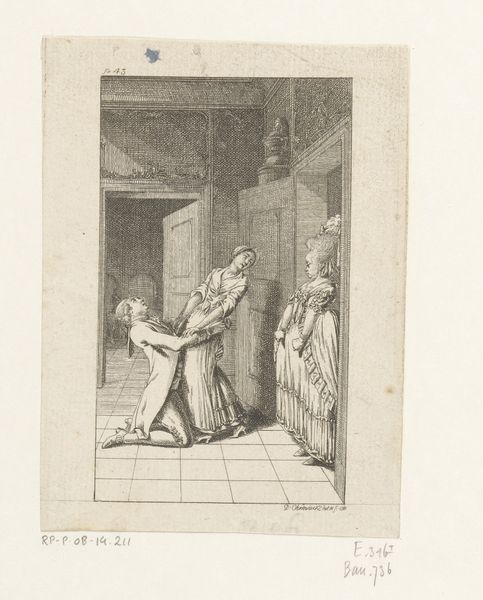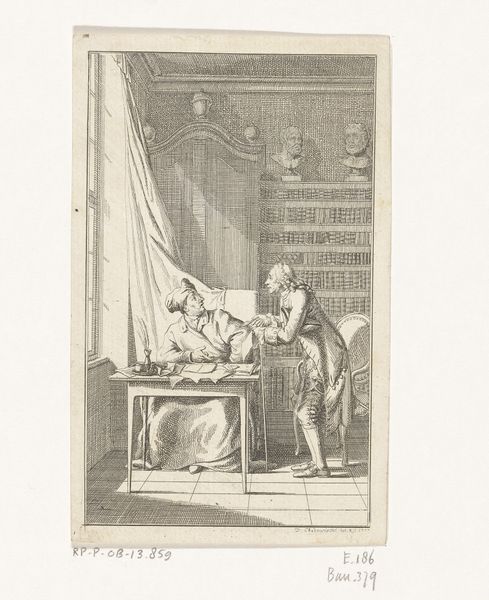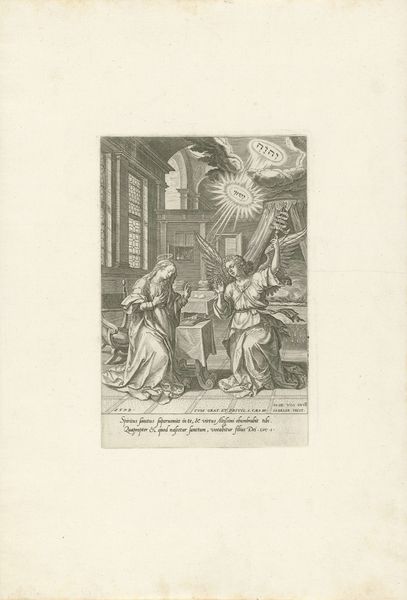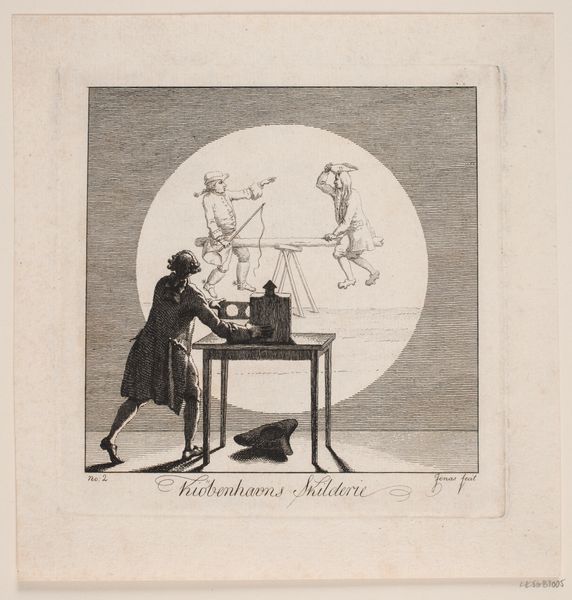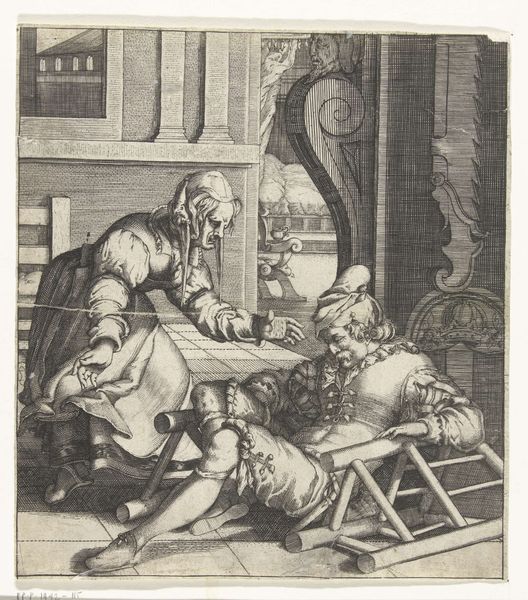
Thomas Linacre gooit het Nieuwe Testament vol verbazing op de grond 1807
0:00
0:00
reiniervinkeles
Rijksmuseum
#
pencil drawn
#
aged paper
#
toned paper
#
light pencil work
#
book
#
pencil sketch
#
light coloured
#
old engraving style
#
personal sketchbook
#
sketchbook drawing
#
pencil work
Dimensions: height 244 mm, width 165 mm
Copyright: Rijks Museum: Open Domain
Editor: Here we have Reinier Vinkeles' 1807 engraving, "Thomas Linacre gooit het Nieuwe Testament vol verbazing op de grond"—roughly translated, "Thomas Linacre throws the New Testament to the ground in amazement." It’s quite a dramatic scene rendered in delicate pencil work, and the aged paper adds to that historical feeling. What’s your interpretation of it? Curator: As a materialist, my immediate thought goes to the means of its production. The engraving itself is a product of labor, skill, and access to specific materials – the paper, the metal plate, the tools. This process becomes part of the artwork’s meaning, reflecting the availability of knowledge and its dissemination during that period. What does the act of Linacre rejecting the book itself represent materially? Editor: I guess it highlights the shift from religious doctrine towards more scientific thinking, represented here by Linacre dismissing a key religious text in favor of maybe something more secular? The printed word versus empirical observation? Curator: Precisely. The book, as a mass-produced object, democratized knowledge, yet Linacre’s rejection also points to a specific tension. Is it not an aristocratic, almost theatrical gesture, a rejection *of* the democratization afforded by print? How do you think Vinkeles views this action by Linacre, given the choice of medium? Editor: It’s interesting to think about Vinkeles’ own position in relation to these shifts in thinking. The engraving suggests precision, maybe even aligning him with Linacre's pursuit of knowledge through observation, or simply depicting a known, probably socially sanctioned, historical fact. Curator: Indeed. Considering this artwork allows us to consider not only the historical moment it depicts, but also the context of its own creation. How artistic production itself contributes to the cultural landscape is something that's easy to overlook when we only focus on content. Editor: I hadn't thought about the act of *making* the art adding so much depth! Thanks. Curator: Of course. Remember, the artwork is not just an image but a record of material and intellectual engagement with the world.
Comments
No comments
Be the first to comment and join the conversation on the ultimate creative platform.
